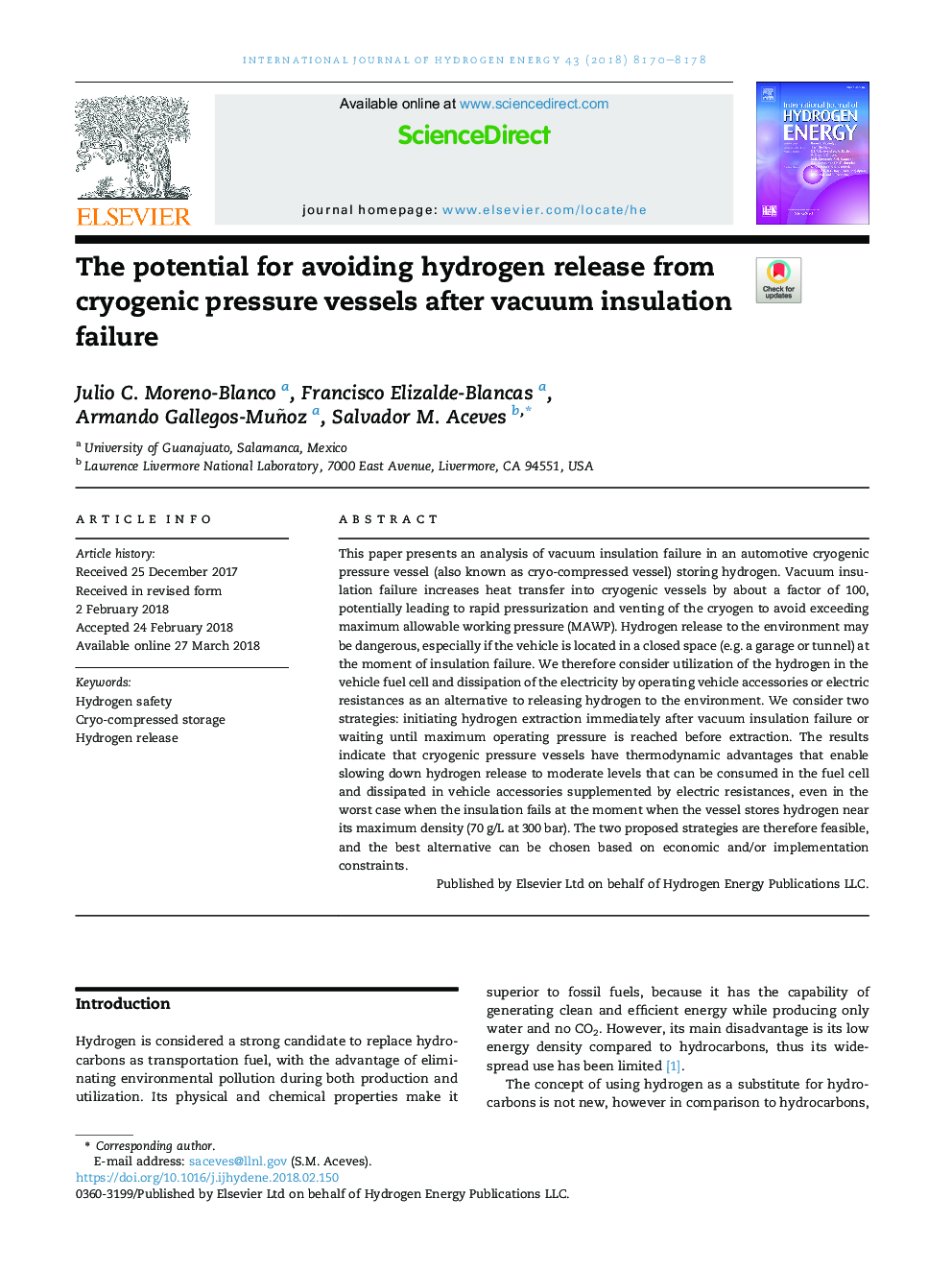| Article ID | Journal | Published Year | Pages | File Type |
|---|---|---|---|---|
| 7706493 | International Journal of Hydrogen Energy | 2018 | 9 Pages |
Abstract
This paper presents an analysis of vacuum insulation failure in an automotive cryogenic pressure vessel (also known as cryo-compressed vessel) storing hydrogen. Vacuum insulation failure increases heat transfer into cryogenic vessels by about a factor of 100, potentially leading to rapid pressurization and venting of the cryogen to avoid exceeding maximum allowable working pressure (MAWP). Hydrogen release to the environment may be dangerous, especially if the vehicle is located in a closed space (e.g. a garage or tunnel) at the moment of insulation failure. We therefore consider utilization of the hydrogen in the vehicle fuel cell and dissipation of the electricity by operating vehicle accessories or electric resistances as an alternative to releasing hydrogen to the environment. We consider two strategies: initiating hydrogen extraction immediately after vacuum insulation failure or waiting until maximum operating pressure is reached before extraction. The results indicate that cryogenic pressure vessels have thermodynamic advantages that enable slowing down hydrogen release to moderate levels that can be consumed in the fuel cell and dissipated in vehicle accessories supplemented by electric resistances, even in the worst case when the insulation fails at the moment when the vessel stores hydrogen near its maximum density (70Â g/L at 300Â bar). The two proposed strategies are therefore feasible, and the best alternative can be chosen based on economic and/or implementation constraints.
Keywords
Related Topics
Physical Sciences and Engineering
Chemistry
Electrochemistry
Authors
Julio C. Moreno-Blanco, Francisco Elizalde-Blancas, Armando Gallegos-Muñoz, Salvador M. Aceves,
